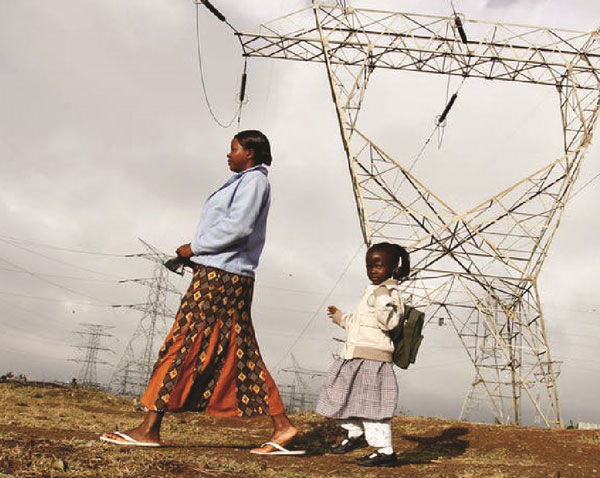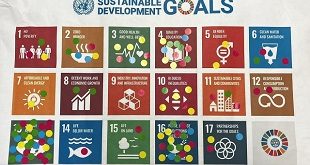
Why Kenya’s move rests on false or fanciful premises
NEWS ANALYSIS | BRENDON J CANNON | Kenya wants to go nuclear. Since 2012, Nairobi has been talking the talk and walking the walk. It has engaged the International Atomic Energy Agency and signed multilateral letters of intent in pursuit of nuclear power.
To date, Kenya reportedly has memoranda of understanding with Russia, China, South Korea, and Slovakia which involve the building of four nuclear power plants with a total output of 4,000 MW. France is apparently also eyeing the potentially lucrative deals which would nearly double Kenya’s current electricity capacity.
Kenya’s Nuclear Electricity Board secured the global atomic energy agency’s approval in 2016. It hopes to have the first plant online anywhere from 2022 to 2027, leading a new African push for nuclear power. The only country currently generating nuclear is South Africa.
Other African countries have signed agreements with foreign firms. These include Nigeria’s plans to build plants with Rosatom, the Russian firm. South Africa is also pursuing a deal for new nuclear power plants with the company as is Egypt.
In January 2017, the international nuclear agency concluded that Ghana had made “considerable progress in the development of its nuclear power infrastructure.” Uganda and Rwanda are also reportedly pursuing nuclear energy.
The cost of the Kenya plant is estimated at Shs500 billion (ApproxUS$5 billion). This is costly and, given the current energy consumption patterns in Kenya, would be a massive waste of money.
Kenya’s industrial and consumer demand, economic growth, relative poverty as well as the current grid and distribution network simply do not support this magnitude of power generation at such exorbitant costs.
Myths about Kenya’s power situation
According to the popular narrative, Kenya suffers from the twin evils of electricity that is overly expensive and in short supply. Yet there is strong evidence that Kenya’s power is relatively cheap and that successive governments have exaggerated both its economic growth trajectory and its need for a massive increase in power generation.
For example, Kenya has an installed capacity of just over 2,400MW, against a peak demand of just over 1,600MW. This is 800MW above peak hours demand.
While economies are required to have surplus power capacity, excess capacity can lead to higher power bills as consumers are often charged for idle power plants.
Thus the government, while promising ever cheaper power to consumers may actually be undercutting this promise in its pursuit of nuclear power plants and other costly projects that fail to reflect both industrial and private consumer demand.
A recent study by a German engineering consultancy further confirmed how exaggerated government figures about demand have been. It noted that Kenya’s maximum power demand would “grow 72% to 2,259MW by 2020 from the current 1,620MW, when projects such as the standard gauge railway start operating fully”.
Government estimates, on the other hand, project peak demand will jump threefold to 4,755 megawatts in the three-year period. This is twice as much as the consultant’s estimates.
On top of this, Kenya’s problem is not that it needs more energy. Rather it needs to address distribution issues.
Any project involving the generation of more power needs to pay equal attention to Kenya’s grid and distribution system which currently cannot handle additional power. This includes corresponding efforts at regular, systematic maintenance work. Without these, any extra power generated from renewable and other energy sources will remain costly and wasted.
Yet another note of caution is in order. Demand from Kenya’s domestic consumers remains low even though a total of 5.8 million customers now have connections to power – a five-fold increase in the past seven years.
Why is this the case?
Neither a lack of connectivity nor an unreliable supply is to blame for the low consumption of electricity by the vast majority of Kenyan consumers. Nor is it because of reportedly relatively high electricity tariffs.
Rather, it is simply because the majority of Kenyans still have low income levels. Many Kenyans simply cannot afford the luxury of modern appliances for cooking, heating, or refrigerating.
This simple fact has neither been figured into government prognostications nor donor-driven last-mile connectivity scenarios.
Grappling with reality
Over two years ago, after Kenya signed an MOU with China to explore building a nuclear power plant, I argued that sober analysis was required prior to walking further down that path. The situation remains the same today.
This is not a question of whether or not Kenya would be a responsible nuclear power producer. Indeed, all indications are that national nuclear electricity board (KNEB) and other relevant government agencies have acted scrupulously and responsibly.
Nevertheless, both the board as well as the international nuclear agency, the IAEA, should honestly conclude – and then publicly announce – that Kenya does not have a need for nuclear power.
Adding extremely expensive nuclear power to Kenya’s energy mix along with power from other inadvisable projects such as the Lamu coal power plant is arguably inexcusable as well as profligate. Lamu is expected to produce 5,000MW of power within a period of three years.
As such, Kenya needs to work overtime to set a power generation agenda that identifies real versus perceived needs. The country’s electricity agenda must not be driven by estimated consumption figures that fail to correspond to the true energy needs. In the words of a former Kenyan energy official, “It does not take much effort to notice the gap between what is on paper and the economic reality”.
Brendon J. Cannon is Assistant Professor of International Security, Department of Humanities and Social Science, Khalifa University
Source: theconversation
 The Independent Uganda: You get the Truth we Pay the Price
The Independent Uganda: You get the Truth we Pay the Price



